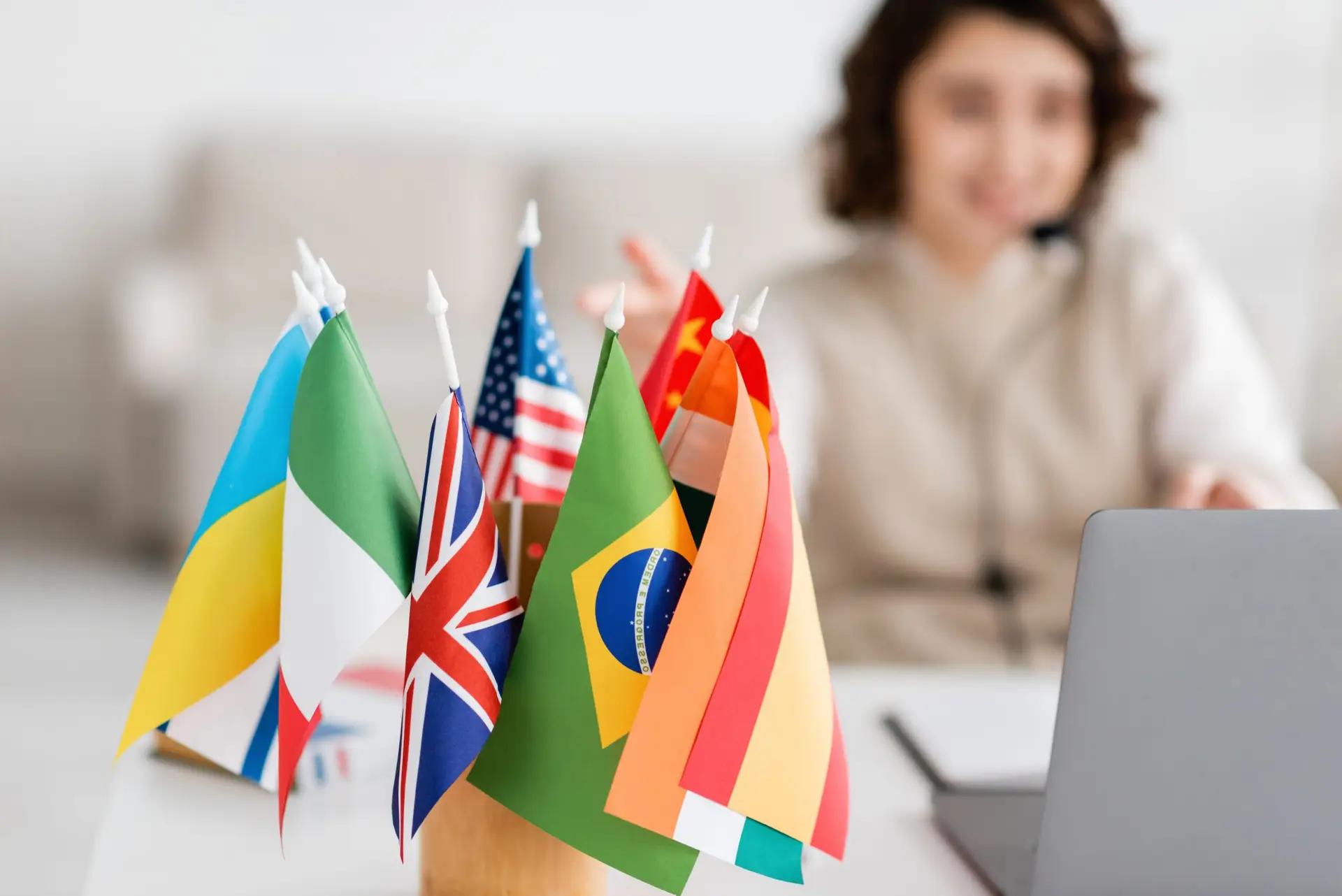
The Most Common Translation Mistakes and How to Avoid Them
Translation is crucial for bridging the gap between languages and facilitating effective communication. However, it has its challenges. Common translation mistakes can lead to misinterpretations, confusion, and even offense. Understanding and learning to avoid these mistakes is essential for ensuring accurate and high-quality translations.
Understanding Translation Mistakes
Translation mistakes can occur due to various factors, including literal translations, cultural differences, and errors in grammar and syntax. Literal translations can result in different meanings and misinterpretations of the source text. Cultural differences and nuances can also impact the accuracy of translations, as words and expressions may have different connotations and interpretations in other cultures. Grammar and syntax errors can also lead to grammatically incorrect or nonsensical translations.
The Impact of Literal Translations
Literal translations can have significant implications for their accuracy and effectiveness. When a translator translates a source text word for word without considering the context or cultural differences, the resulting translation may not convey the intended meaning. This can lead to confusion, misinterpretations, and even offense.
For example, the fast-food giant KFC reportedly mistranslated their famous slogan “Finger-licking good” as “Eat your fingers off” in Chinese. Such literal translations can hurt a brand’s reputation. It is essential for translators to understand the source text and its intended meaning to provide accurate and culturally sensitive translations.
The Challenge of Cultural Nuances and Localization
Cultural nuances and localization are crucial aspects of translation that should not be overlooked. These factors can significantly impact the accuracy and effectiveness of translations. Here are some key points to consider:
- Cultural nuances: Each language has its unique interpretation and connotation of words and expressions. Translators must consider these nuances to convey the intended meaning accurately.
- Localization: Adapting a translation to the target culture is essential for effective communication. This involves considering cultural differences, customs, and preferences.
- Cultural differences: Different cultures have different ways of thinking, living, and expressing themselves. Translators must be aware of these differences to avoid misinterpretations and inaccuracies in translations.
- Cultural consultants: Engaging with cultural consultants with expertise in the target culture can provide valuable insights and ensure accurate translations.
Common Translation Errors Explained
Several common translation errors can impact the accuracy and quality of translations. These errors may occur due to grammar and syntax oversights, misinterpretation of idioms and expressions, and contextual mistakes and misunderstandings.
Need Translation Services?

Grammar and Syntax Oversights
Grammar and syntax oversights are common translation errors that can significantly impact the quality of translated content. Different languages have unique grammar rules and sentence structures; translators must know these differences. Failure to consider these differences can result in grammatically incorrect or nonsensical translations.
Additionally, regional differences in grammar and syntax can also impact the translation process. For example, the use of collective nouns differs between American English and British English. Translators must be mindful of these oversights and ensure accurate grammar and syntax in their translations.
Misinterpretation of Idioms and Expressions
Idioms and expressions are commonly used in language to convey specific meanings that may not be understood by literal translation. Translators unfamiliar with the idioms and phrases of the source and target languages may misinterpret them, leading to incorrect translations. The intended meaning may be lost or distorted, confusing the reader. Translators should take the time to research and understand idioms and expressions in both languages to convey the intended message accurately.
Contextual Errors and Misunderstandings
Contextual errors and misunderstandings can occur when translators fail to understand the context of the source text. Words and phrases can have different meanings depending on the situation or arrangement of words in a sentence. Translators who rely solely on literal, word-for-word translations may miss the intended meaning and context of the text. Translators must consider the context and ensure accurate translations that capture the intended message. Without proper context, translations may lack clarity and accuracy.
Technical Challenges in Translation
Translation also presents technical challenges that can impact the accuracy and quality of translations. Machine translation tools, technical translations, and translation memory are some of the difficulties translators face.
Reliance on Machine Translation Tools
Machine translation tools like Google Translate have improved with natural language processing but are still inaccurate. Translators relying solely on machine translation tools may encounter errors and inaccuracies. These tools often fail to capture the source text’s nuances, cultural differences, and context. While machine translation can be helpful as a starting point, it should not be the sole translation method. Translators should use their expertise and language skills to ensure accurate and high-quality translations.
Inconsistencies in Terminology Use
Inconsistent use of terminology in translations can lead to confusion and inconsistency in the translated material. Translators should maintain consistency in terminology throughout the document to ensure accuracy and clarity. Creating a glossary and style guide can help ensure consistent terminology use.
Here is an example of a text table that illustrates the importance of consistency in terminology:
| English Term | Spanish Translation |
|---|---|
| Computer | Computadora |
| Laptop | Portátil |
| Internet | Internet |
| Software | Software |
It is crucial to grasp the differences between certified and notarized translation services in order to select the right service for your specific needs.
Need Translation Services?

Overlooking Register and Tone Adjustments
Register and tone adjustments are essential considerations in translation to ensure effective communication. Different languages and cultures have varying levels of formality, and translators must match the appropriate register and tone of the source text. Failure to do so can result in translations that sound unnatural or inappropriate. Translators should carefully analyze the intended audience and purpose of the text to maintain the appropriate level of formality and tone. For example, a formal academic paper should be translated with a professional and formal tone, while informal language may be suitable for more casual content.
Cultural and Linguistic Considerations
Cultural and linguistic considerations are crucial for accurate and culturally sensitive translations. Cultural sensitivities, local dialects, and adapting to the target audience’s culture are critical considerations in translation.
Underestimating Cultural Sensitivities
Cultural sensitivities play a significant role in translation. Each culture has values, beliefs, and customs that translations must respect and consider. Failure to do so can result in misunderstandings, offense, and a loss of credibility. Translators should be aware of cultural sensitivities and engage with cultural consultants when necessary to ensure accurate and culturally appropriate translations. Cultural consultants can provide insights into the target culture and help translators navigate potential pitfalls and challenges.
Ignoring Local Dialects and Slangs
Local dialects and slang can present translation challenges, especially for a specific region or community. These linguistic variations may have different meanings or nuances that must be accurately conveyed in the translation. Ignoring local dialects and slang can lead to misunderstandings and misinterpretations. Translators should be familiar with these variations and ensure that the translation captures the intended meaning and cultural context.
Failing to Adapt to the Target Audience’s Culture
Adapting to the target audience’s culture is essential for effective communication through translation. Different cultures have unique ways of thinking, living, and communicating. Translators must consider the target audience’s cultural norms, values, and preferences to ensure accurate and culturally sensitive translations. Localization is an essential aspect of this process, which involves adapting the translation to the cultural context of the target audience. Considering the target audience’s culture enhances the effectiveness and impact of the translation.
Strategies to Improve Translation Accuracy
Certain strategies can be implemented to improve translation accuracy. These include proofreading and editing, utilizing professional translation services, and leveraging technology with a human touch.
Importance of Proofreading and Editing
Proofreading and editing are essential steps in the translation process to ensure accuracy and quality. Translators should thoroughly review their translations for errors, inconsistencies, and readability. Proofreading helps identify mistakes, improve sentence structure, and enhance the overall quality of the translation. It is also essential to have a fresh pair of eyes review the translation to catch any errors or inconsistencies that may have been overlooked. Editing ensures that the translation is polished and meets the desired level of quality.
Utilizing Professional Translation Services
Utilizing professional translation services is crucial for accurate and high-quality translations. Professional translation agencies have years of experience and expertise in the field, ensuring accurate translations that capture the nuances and cultural context of the source text. These agencies employ skilled translators who are proficient in multiple languages and have subject matter expertise in various fields. By entrusting your translation needs to professionals, you can be confident in the accuracy and quality of the translated content.
Leveraging Technology with a Human Touch
Technology has advanced in the field of translation, with machine translation tools offering quick translations. However, these tools still need the human touch for accurate and nuanced translations. While technology can assist in the translation process, it is crucial to have a human translator who can understand and interpret the subtleties of the source text. Combining technology with human expertise can make translations more accurate, culturally sensitive, and effective.
Enhancing Communication in Translation Processes
Effective communication is vital in the translation process, ensuring accurate and high-quality translations. Clear briefs and guidelines, continuous feedback and revisions, and building a glossary for consistency are some strategies to enhance communication.
The Role of Clear Briefs and Guidelines
Clear briefs and guidelines provide essential information to translators and help them understand the objectives and requirements of the translation project. Translators can better meet the client’s expectations when they have a clear understanding of the desired outcome. Clear briefs outline the tone, style, and specific instructions for the translation, allowing translators to deliver accurate and high-quality translations.
Continuous Feedback and Revisions
Continuous feedback and revisions are crucial for ensuring the quality and accuracy of translations. Translators should seek feedback from clients and reviewers to identify any areas that need improvement or clarification. This iterative process allows for revisions and refinements to enhance the translation. Regular communication and collaboration between translators and clients result in translations that meet the desired standards and expectations.
Building a Glossary for Consistency
Building a glossary is an effective way to ensure consistency in translations. A glossary contains a list of key terms and phrases and their corresponding translations. This resource helps translators maintain consistency in terminology throughout the translation process. Translators can reference the glossary to ensure accurate and consistent translations, which is especially important for technical or specialized content. The glossary is a reference guide and helps create a cohesive and professional translation.
Best Practices for Avoiding Translation Mistakes
Specific best practices can be followed to avoid translation mistakes. These include conducting thorough research, engaging with cultural consultants, and regular training and upskilling for translators.
Conducting Thorough Research
Thorough research is essential for accurate and effective translations. Translators should invest time in reading books, listening to audio files, and perusing grammar books to enhance their understanding of the languages they work with. Research helps translators familiarize themselves with idioms, expressions, cultural nuances, and specific terminology relevant to the subject matter. By conducting thorough research, translators can provide accurate and contextually appropriate translations.
Regular Training and Up-skilling for Translators
Regular training and up-skilling for translators are crucial to prevent common translation errors. Continuous professional development ensures that translators stay updated with the latest linguistic trends and tools, enhancing their ability to deliver accurate translations. Engaging in regular training sessions helps translators refine their skills, stay abreast of industry advancements, and adapt to evolving language landscapes. By investing in ongoing learning and development opportunities, translators can improve their proficiency and provide high-quality translations that meet clients’ diverse needs.
Engaging with Cultural Consultants
Engaging with cultural consultants is valuable when translating content that requires cultural sensitivity. Cultural consultants have expertise in the target culture and can provide insights into the target audience’s customs, values, and preferences. Their guidance ensures accurate translations that are culturally appropriate and resonate with the intended audience. Collaboration with cultural consultants helps translators navigate potential cultural pitfalls and ensures effective communication across cultures.
Conclusion
Recognizing and rectifying prevalent translation errors can significantly enhance the precision and impact of your translated material. Critical tactics for successful translations include:
- Steering clear of word-for-word translations.
- Appreciating cultural subtleties and language nuances.
- Making use of professional services and technology combined with a personal touch.
Emphasizing the importance of reviewing, collaborating with cultural experts, and maintaining an open feedback loop can enrich communication and uphold coherence in your translated content. Conduct thorough research, provide ongoing training, and develop a glossary to minimize mistakes and deliver precise translations that connect with your intended audience.
Frequently Asked Questions
How common are translation errors?
Translation errors are more common than you think, especially in a globalized world where communication across languages is increasingly important. The frequency of translation errors can vary depending on factors such as the text’s complexity, the translator’s proficiency, and the similarity between the source and target languages. Even professional translators can make mistakes, so it’s always a good idea to double-check meaningful translations or work with reputable translation services to minimize errors. Inaccurate translations can lead to misunderstandings, confusion, and even unintended offense, so it’s crucial to be aware of the potential for mistakes and take steps to ensure clear and accurate communication across languages.
What are the common mistakes in translation?
Common mistakes in translation include:
- Word-for-word translation: Translating each word individually without considering the context or idiomatic expressions can lead to awkward or incorrect translations.
- Ignoring cultural nuances: Failing to account for cultural differences and nuances can result in translations that are culturally insensitive or inaccurate.
- Lack of subject matter expertise: Translators who are unfamiliar with the subject matter they are translating may struggle to convey technical or specialized terminology accurately.
- Machine translation errors: Relying solely on machine translation tools without human oversight can result in mistranslations, especially for languages with complex grammar or multiple-word meanings.
- Not proofreading: Skipping the proofreading stage can lead to overlooked errors, typos, or inconsistencies in the translated text.
- Misunderstanding the tone: Failing to capture the appropriate tone of the original text can result in a translated version that does not convey the intended message or emotions effectively.














